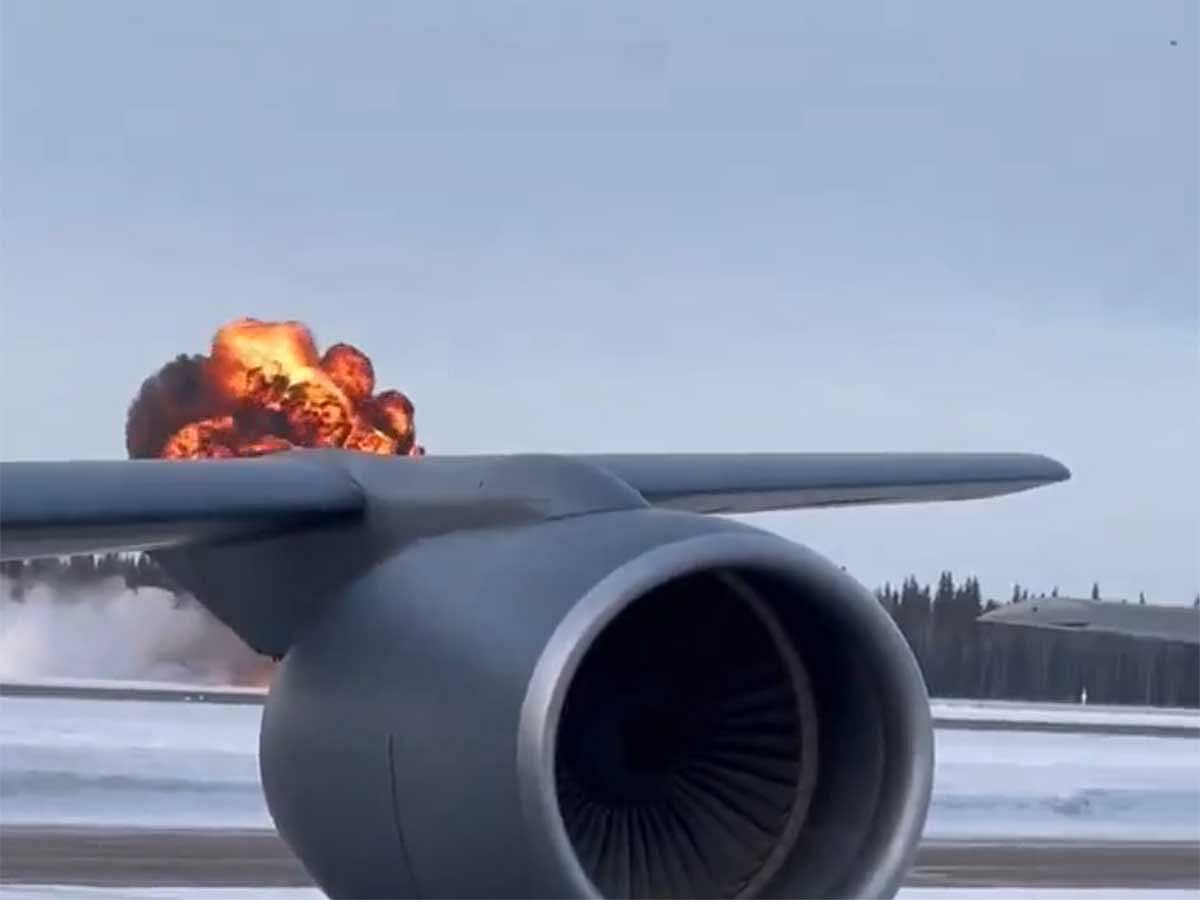In a dramatic incident earlier this year, a US Air Force F-35 pilot was forced to eject after spending 50 minutes in mid-flight troubleshooting a critical landing gear malfunction with engineers on a conference call before the fighter jet ultimately plummeted onto an Alaska runway and burst into flames.
Video footage of the January 28 crash at Eielson Air Force Base captured the jet spiralling toward the runway, followed by a fiery crash. The pilot was seen descending safely via parachute.
According to a report obtained by CNN, the crash was caused by ice in the hydraulic lines of the nose and main landing gear, which prevented them from deploying correctly.
After takeoff, the pilot attempted to retract the gear without success. Upon redeploying it, the nose gear locked at an awkward left-angled position.
While attempting to resolve the issue, the jet’s sensors mistakenly registered that it was on the ground—even though it remained airborne—resulting in the aircraft becoming 'uncontrollable.'
During the nearly hour-long call, the pilot and the team—including five Lockheed Martin engineers—attempted two 'touch-and-go' landings to realign the jammed nose gear. Unfortunately, both attempts failed and caused the landing gear to freeze entirely.
An Air Force inspection later revealed that about one-third of the hydraulic fluid in the nose and right main landing gear was actually water. A similar hydraulic-icing incident occurred at the same base nine days after this crash, though that jet landed safely.
The crash occurred under extreme cold—approximately −18 °C (1-2 °F)
The investigation blamed several factors: poor crew decision-making (including delaying emergency ejection during the in-flight conference call), lack of oversight of the hazardous-materials program, and failure to adhere to correct maintenance protocols for hydraulic servicing.
The F-35 program itself continues to face criticism over cost and technical issues. The price of each jet has dropped from around $135.8 million in 2021 to approximately $81 million in 2024, under a preliminary agreement with the U.S. Department of Defense.
According to the U.S. Government Accountability Office, the program is projected to continue through 2088, with total costs expected to exceed $2 trillion
Network Links
GN StoreDownload our app
© Al Nisr Publishing LLC 2025. All rights reserved.
